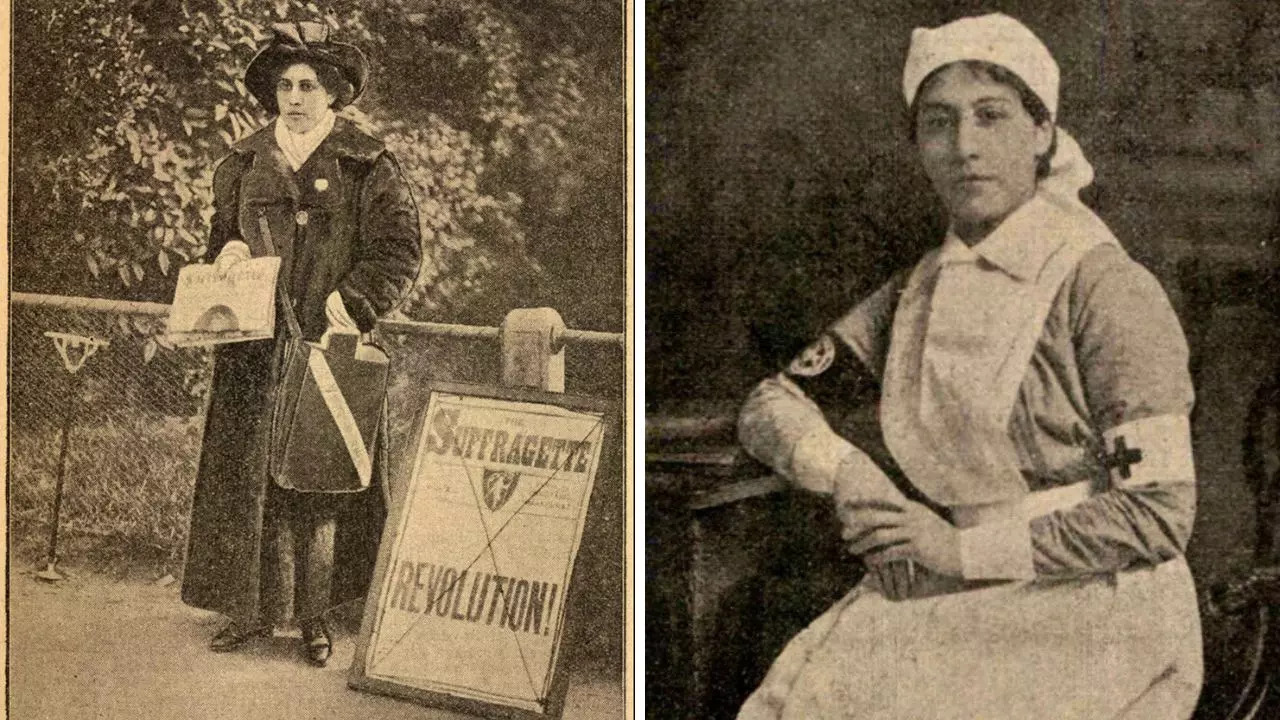(Left) Sophia Duleep Singh selling The Suffragette in 1913; (right) As a nurse during World War I (Photo: Wikimedia Commons)
Princess Sofia Duleep Singh (August 8, 1876 – August 22, 1948) was one of the most prominent figures of the British suffragette movement. The third daughter of the last ruler of the Sikh Empire, Maharaja Duleep Singh and goddaughter of Queen Victoria, Princess Sofia fought for women’s equality in the early 20th century. Her mother was Bamba Müller, Duleep Singh’s first wife. Princess Sofia used her position, power and prestige in British society to advocate for women’s emancipation.
His father was deposed by the British and at the age of 15 he was sent to England after converting to Christianity and becoming a naturalized British citizen.
Princess Sophia’s childhood was spent at Elvedon Hall in Suffolk. Like her sisters, she inherited a fortune of £23,000 from her father. According to Historic Royal Palaces, “This was arguably a mere fraction of the wealth they could expect from his estate. In 1896 Queen Victoria gifted Princess Sophia Faraday House, then part of the Hampton Court Estate, as a grace and favour residence. The Queen also granted her an allowance of £200 a year for her upkeep.”
She supported the women’s suffrage movement in Britain, which was a struggle of women demanding the right to vote. These women were called suffragettes. Her involvement began when Sophia met Una Dugdale, a member of the Women’s Social and Political Union (WSPU), who convinced her to join the WSPU.
According to English Heritage, “From 1909, she was active in her local branch in Kingston upon Thames. Sophia concentrated on fundraising and met Emmeline Pankhurst, who recognised the publicity the princess could generate.”
On 18 November 1910, she took part in a march on the British Parliament in protest against the decision not to allow more time for the passage of the suffrage bill. “She witnessed the physical force used by the police at the demonstration and intervened in an attack on a suffragette. Sophia was arrested on ‘Black Friday’, but the charges were soon dropped,” says English Heritage. Sophia was arrested for taking part in physical and violent protests, but was never sent to prison due to her status and name.
She was often seen selling The Suffragette newspaper from her stall at Hampton Court Palace and took part in the 1911 census boycott. When the First World War began, the WSPU stopped campaigning and Sophia began working as a volunteer Red Cross nurse. She cared for Indian soldiers and even gave away signed photographs to Sikh soldiers.
Her work on behalf of the women’s suffrage movement was recognised after her death. She also appeared on the Royal Mail commemorative stamp series ‘Votes for Women’, issued on 15 February 2018. She appeared on the £1.57 stamp selling The Suffragette.
Disclaimer:
The information contained in this post is for general information purposes only. We make no representations or warranties of any kind, express or implied, about the completeness, accuracy, reliability, suitability or availability with respect to the website or the information, products, services, or related graphics contained on the post for any purpose.
We respect the intellectual property rights of content creators. If you are the owner of any material featured on our website and have concerns about its use, please contact us. We are committed to addressing any copyright issues promptly and will remove any material within 2 days of receiving a request from the rightful owner.

